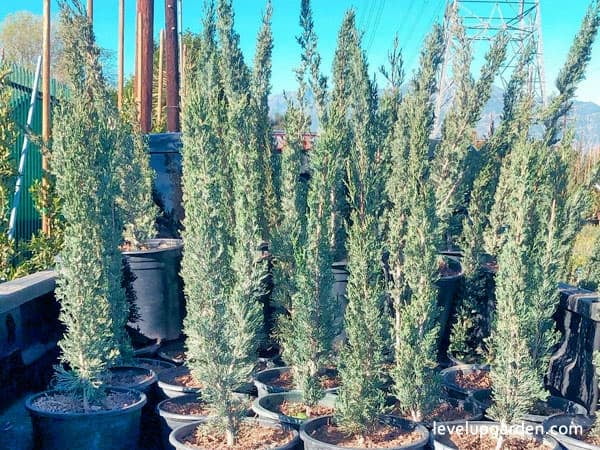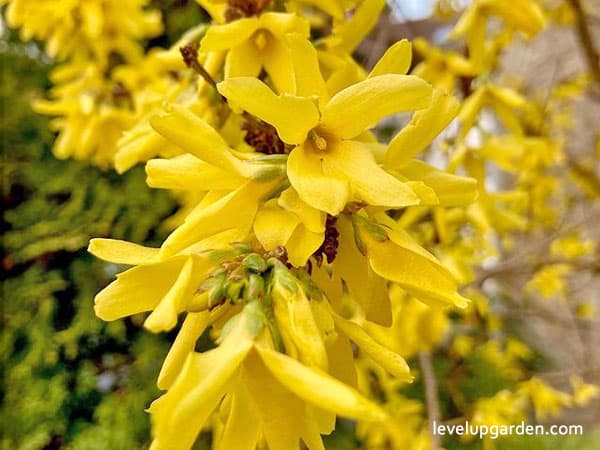Italian Cypress (Cupressus sempervirens) is commonly known as Mediterranean cypress, Tuscan cypress, Persian cypress, or pencil pine is an evergreen medium-tall tree up to 35 m tall, with a conical crown, horizontal branches, and various loosely hanging twigs. Read more to learn everything about this tree, whether you should grow it in your beautiful garden.

Italian Cypress (Cupressus sempervirens) is a slender, columnar, evergreen coniferous tree that makes a beautiful and distinctive addition to the landscape. The upright branches are covered with green to bluish scaly leaves and bear short flattened branches. The leaves are aromatic when crushed. The bulbous fruit is ovoid, about 3 cm long, with small bosses on the scales. It makes a wonderful specimen plant, as depicted on Tuscan postcards, with its year-round vigor; it is said to live for 1,000 years. It is ideal for formal landscapes, arrays, and containers as an accent plant. Prefers hot, dry climates and well-drained soil, but can survive the hot, humid conditions of the Southeast.
I. Italian Cypress (Cupressus sempervirens) Profile – An Overview of the plant

| Common Name | Italian cypress, Mediterranean cypress, Tuscan cypress, Persian cypress, Pencil pine |
| Botanical Name | Cupressus semperviren |
| Plant Type | Conifers, Trees |
| Plant Family | Cupressus – Cypresses |
| Soil Type | Chalk, Clay, Loam, Sand |
| Soil pH | Acid, Alkaline, Neutral |
| Soil Drainage | Well-Drained |
| Mature Height | 35-40 ft. |
| Mature Width | 5 ft. |
| Spacing | 240″ (600cm) |
| Sunlight | Full Sun |
| Growth Rate | Fast |
| Water Needs | Average |
| Maintenance | Low |
II. Italian Cypress (Cupressus sempervirens) Appearance

- Leaf: The scaly leaves are dark blue-green and have a pleasant aroma when crushed.
- Stem: Stems are very erect, slender, and columnar when young, becoming horizontal as they age.
- Bark: The bark of the tree is thin and smooth. When the bark ages, it becomes gray to grayish brown.
III. Growing and Care Conditions

- Water: As the tree ages, it becomes more drought tolerant, but young plants need to be well watered until they are established.
- Planting: Italian Cypress is drought tolerant and prefers dry areas, so choose a sunny location (4-8 hours per day) with well-drained soil.
- Pests and Diseases: Mite infestations are a common problem. Bugworms are an occasional problem. Root rot can occur in poorly drained areas. Honeycankers and cankers affect many trees.
IV. Italian Cypress (Cupressus sempervirens) Uses
Mediterranean Cypress has been widely cultivated as an ornamental tree for thousands of years away from its native region, mainly in the Mediterranean Basin and in California, southwestern South Africa, and southern Australia, where summers are hot and dry winters are mild and rainy. It can also be successfully grown in areas with cool and humid summers, such as the British Isles, New Zealand, and the Pacific Northwest (coastal areas of Oregon, Washington, and British Columbia). It is also planted as an ornamental tree in Florida and coastal areas of the southern United States. In some areas, especially in the U.S., it is called “Italian” or “Tuscan Cypress”. The Mediterranean cypress, common in New Mexico, is also called the “drama tree” because of its tendency to bend in the slightest breeze.
Before the invention of stainless steel, cypress was used in distilleries as a barrel to hold the mash fermentation products used to make alcohol.
In cosmetics, it is used for its astringent, firming, anti-seborrheic, anti-dandruff, anti-aging, and perfuming properties. The wood is also traditionally used in Italian harpsichords.
V. Why should you plant an Italian Cypress (Cupressus sempervirens)?

With its elegant, slender silhouette and annual growth of three feet each year, the Italian Cypress is one of the top trees for increasing property values. It is particularly well adapted to a variety of climates and can add height to foundation plantings without taking up too much space.
Architects use Italian Cypress to cover vertical drains, soften corners and vertical edges, and as an elegant site divider. It can also be planted in large pots to frame an entryway or to elegantly define a back patio or pool. Italian Cypress grows in almost any location and adapts to a wide variety of soil types, making it unrivaled in landscape opulence. It is also resistant to smog and frost damage.
Unlike other evergreens, Italian Cypress does not grow in a pyramidal shape. This popular tree grows in thin columns, not much wider, and practically straight up. So when it reaches the height you want, just cut off the top. It is very easy.
- Italian Cypress is a no-fail, low-maintenance way to increase your home’s property value.
- It is often found in upscale neighborhoods. Landscape architects love to use this tree to create a dramatic impact.
- The Italian Cypress proudly displays its tall columnar joints, with the tops pointed in shape. It fits in any location.
- It can grow up to 3 meters tall, but once it grows to the required height, the top can be cut off.
- This graceful tree beautifully accentuates the edges of a property and looks imposing when neatly arranged on either side of a long driveway.
- Its dense blue-green foliage is not only aromatic but also ideally shaped for deck or patio decor. If you don’t have the space, plant it in a pot.
- This hardy evergreen requires little care and can be enjoyed in full sun or partial shade.
- It is drought tolerant and will grow in any soil. Once planted, all you have to do is watch it grow, which can reach heights of up to 3 feet a year.
- Small, brightly colored plants such as Lochinch Butterfly Bush against a backdrop of Italian Cypress add depth and drama to the landscape.
VI. FAQs
How tall do Italian Cypress get?
Italian Cypress is an evergreen tree and can grow up to 115ft tall and 10ft wide, However, the average tree is usually 50ft tall and 3ft wide. The canopy of the Italian cypress is dense, columnar, and symmetrical.
How quickly do Italian Cypress trees grow?
Italian Cypress grows rapidly when planted in the right spot, often growing up to 3 feet (about 9 meters) in a year.
How far apart should I plant Italian Cypress?
When it comes to landscaping with Italian Cypress, planting 3 feet apart will create an efficient and elegant screen or windbreak; if you want each individual tree to stand out and look chic, space them a bit more (5 to 6 feet).







